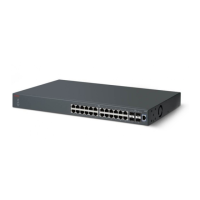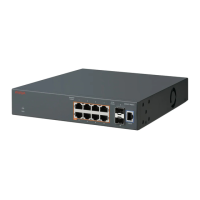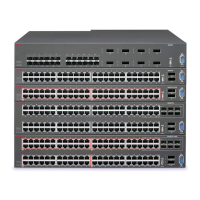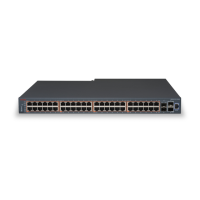Variable Value
Important:
These are the same source IP addresses as in
the IP Manager list. For more information about
the IP Manager list, see Configuring Security on
Avaya Ethernet Routing Switch 3500 Series,
NN47203–504.
default Sets the Telnet settings to the default values.
Using ping
To ensure that the switch has connectivity to the network, ping a device you know is connected to
this network. The ping command tests the network connection to another network device. The
command sends an Internet Control Message Protocol (ICMP) packet from the switch to the target
device. For more information about setting IP addresses, see Setting the IP address on page 41.
Before you begin
The local IP address must be set before issuing the ping command.
Procedure
1. Log on to ACLI to enter User EXEC mode.
2. At the command prompt, enter the following command:
ping <A.B.C.D> | <dns_host_name> | <WORD> [datasize <64-4096>]
[{count <1-9999>} |continuous] [{timeout | -t} <1-120>] [interval
<1-60>] [debug] [source <A.B.C.D>] [ttl <0–255>]
If the device receives the packet, it sends a ping reply. When the switch receives the reply, it
displays a message indicating that the specified IP address is being used. If no reply is
received, a message indicates that the address is not responding.
Example
The following figure shows a sample ping response.
switch>ping 120.16.125.10
Host is reachable
Variable definitions
The following table describes the parameters for the ping command.
Using ping
July 2015 Getting Started with Avaya ERS 3500 Series 49
Comments on this document? infodev@avaya.com

